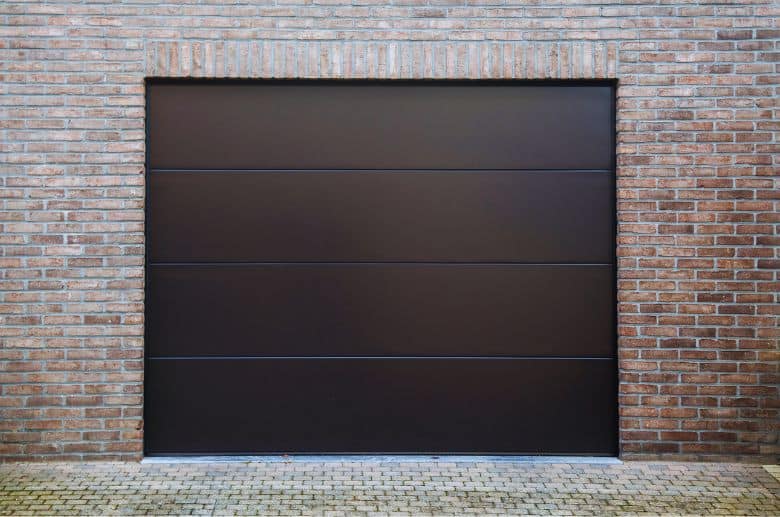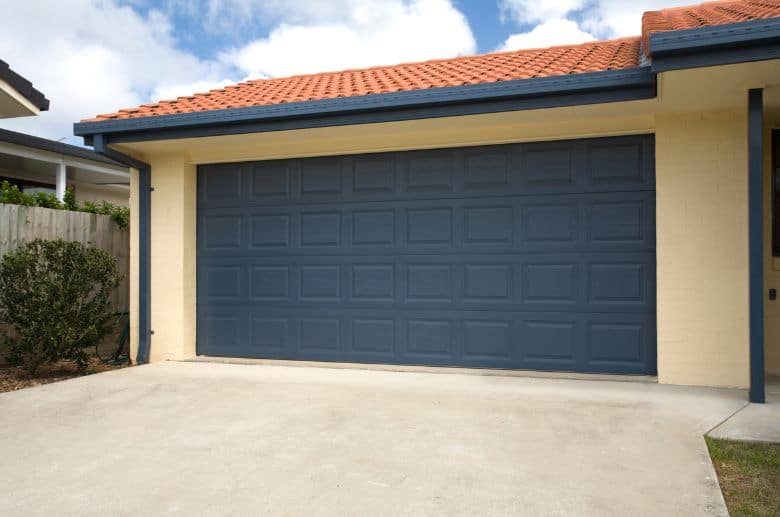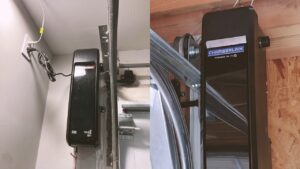When selecting a new garage door, it is crucial to consider its size as it directly impacts the fit and clearance of your vehicle.
This article will focus on the available garage door sizes, specifically standard single and double two-car garage doors for residential use.
We will also provide an easy-to-follow guide on measuring your garage door, so you don’t purchase the wrong one.
How Are Garage Door Sizes Measured?
You have to measure the height and width of your garage door opening to get the accurate size of your garage door. While taking measurements, make sure to take into consideration any fixtures, shelves, and other obstructions.
Below is a step-by-step guide on how to measure your garage door:
Tools Needed
Here’s what you’ll need to measure your garage door:
- Measuring tape
- Step ladder
Step 1: Measure the Garage Door Width
Measure the distance from the right inside jamb to the left inside jamb of the garage door opening.
Step 2: Measure the Garage Door Height
Measure the distance from the floor to the lower edge of the top jamb. Take measurements from different points across the opening to get a decent average. But consult a professional for the best possible solution if there’s more than one inch of variance between measurements.
Step 3: Measure the Sideroom
Measure the lengths at the left and right of your garage door opening. You should have a minimum of 3-3/4″ past the edge of the door for the frames and brackets.
Step 4: Measure the Headroom
Measure the distance from the underside of the lentil to the underside of the ceiling or the lowest obstruction inside the garage. Most garage doors need 12″ of headroom and an additional 3″ if you also need to install a garage door opener.
Step 5: Measure the Backroom
Measure the distance from your garage door to the back of your garage or the nearest obstruction. Usually, your backroom needs at least the garage door height plus 18″. If you need to install a garage door opener, you’ll require a headroom of at least the garage door height plus 50″.
Connect With A Garage Expert
Connect with local experts, Compare quotes, Get the best price.
Possible Configurations of Residential Garage Doors
When choosing a garage door, it’s a good idea to consider your current and future needs. Consider the number of vehicles you own and your garage door use, among other things.
Residential garage doors mainly come in two standard configurations:
- Single-car garage door
- Double-car garage door
Single Car Garage Door

As the name implies, single-car garages provide more than enough space for homeowners that need to park only one car in their garage. Single-car garage doors come readily available in the following dimensions:
- 8ft x 7ft
- 9ft x 7ft
- 10ft x 7ft
The single-car garage doors are also available in the 8ft high variations, providing ample headroom for taller vehicles such as trucks or SUVs.
Double Car Garage Door
Homeowners that need to park two cars in their garage can opt for double-car garage doors since the single-car configuration needs to be wider. Double-car garage doors come in the following dimensions:
- 12ft x 7ft
- 14ft x 7ft
- 16ft x 7ft
- 18ft x 7ft
Like the single-car configuration, the double-car garage doors also come in 8ft high variations for homeowners needing higher garage doors.

Possible Configurations of Commercial Garage Doors
Commercial garage doors come in a variety of configurations. Familiarity with the different configurations is beneficial when selecting one for industrial or commercial use. Let’s discuss the most common commercial garage door configurations so that you can choose one that best suits your needs:
Rolling Steel Doors

Rolling steel garage doors don’t have ceiling tracks because they roll above the door opening. These doors have smaller sections (about 3 in) called slats, allowing them to roll up easily.
Their efficient and durable design makes them ideal for high-frequency units. You’ll often find different variations of this garage door configuration in buildings, shopping malls, and storage units.
Rolling steel doors can be made from aluminum or steel and come in different dimensions. If the standard dimensions don’t fit your needs, you can get a custom garage door according to your required dimensions.
High-Speed Roll-Up Doors
Consider a high-speed roll-up door if you’re looking for a garage door configuration that opens quickly. This is a specialized configuration of roll-up garage doors that can open up within a couple of seconds. Such high speeds make it an ideal candidate for applications that require high operational efficiency and low maintenance.
These garage doors are usually used in commercial industries and distribution centers.
Overhead Sectional Doors

Sectional overhead doors are popular for residential properties and are typically constructed using galvanized steel. These sections are hinged together and slide along the tracks as the door opens.
Overhead sectional doors require less space to function and are quite popular for their ease of use.
Sectional garage doors are popular for residential properties and are typically constructed using galvanized steel. These doors are also made from materials like aluminum (ideal for low-traffic facilities), vinyl, fiberglass, and wood.
Additionally, overhead garage doors are available in various styles, including traditional raised-panel, contemporary, carriage house, and full-view that feature glass panels.
With such a variety, you’re sure to find one that complements the architecture of your stylish home. Custom designs are always available if you can’t find a suitable option.
Another popular variation is the high lift sectional door, mainly used in commercial spaces requiring efficient use of space. This type of door is raised higher on the tracks than standard residential sectional doors before turning over the head, providing sufficient clearance for taller vehicles and storage items.
Connect With A Garage Expert
Connect with local experts, Compare quotes, Get the best price.
So What Garage Door Size Should I Get?
Determining the appropriate size for your garage door requires consideration of several factors, including the dimensions of your door opening and how you plan to use your garage.
It’s also important to consider the height of your ceiling and measure the track size of your garage door to make sure you have enough headroom. Garage door tracks usually need 12 to 18 inches of headroom, although low-headroom tracks are available as an alternative option.
While standard 7ft high one-car or double-car garage door sizes are typically suitable for homeowners with a single car, those with taller trucks may require an 8ft tall garage door.
A common mistake people make when selecting their garage door size is that they often make mistakes while measuring the door opening. If you’re unsure what size garage door you need, consulting with a professional garage door service is recommended.
The Takeaway
Garage door sizes and measurements are very important factors to consider when selecting and installing a new garage door.
The appropriate size for a garage door depends on several elements, including the dimensions of the door opening, the height of the ceiling, and how the garage will be used.
If you need more clarification about the appropriate size for your garage door, seeking advice from a professional garage door service is always recommended.




